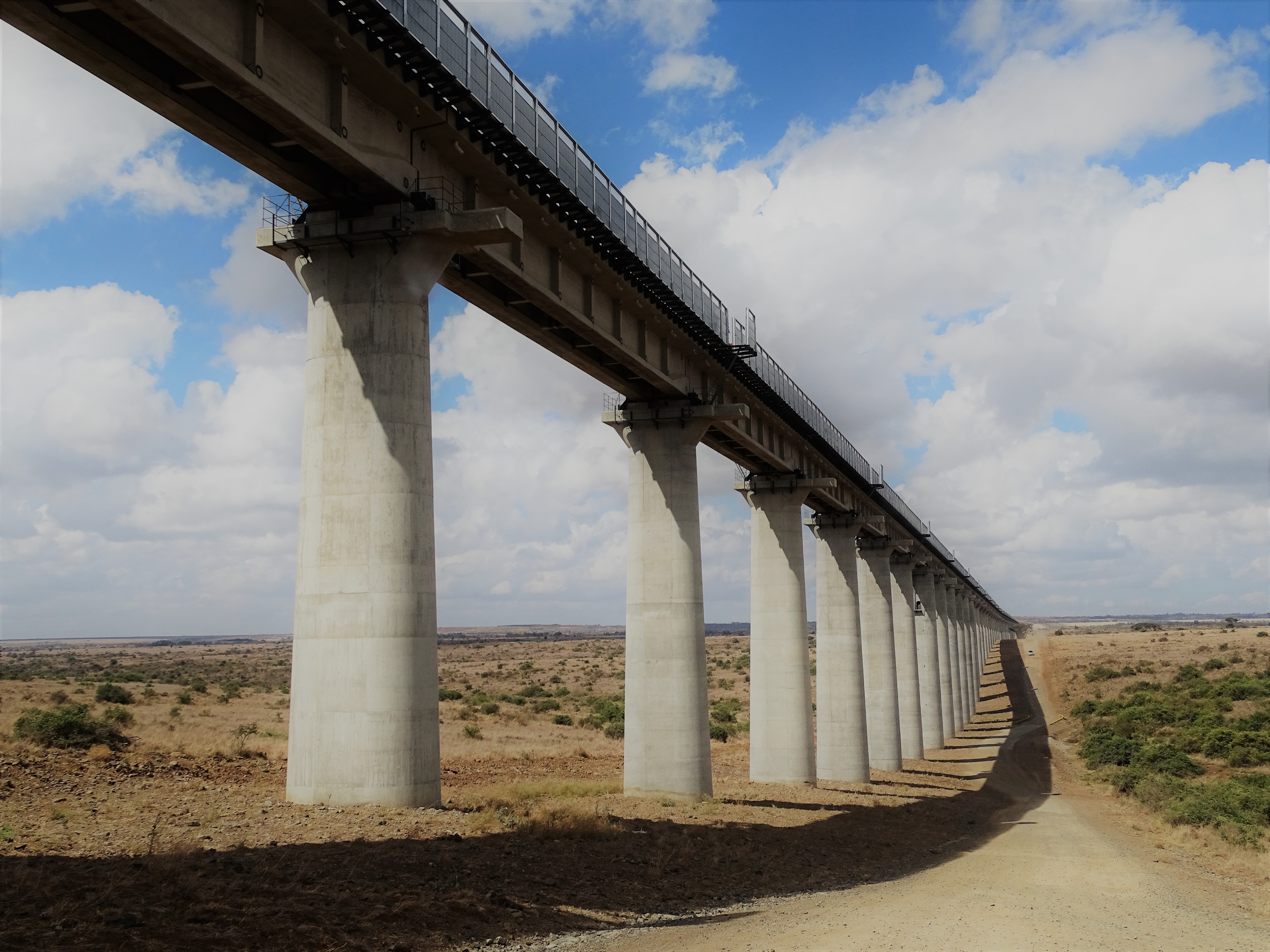Kenya

Launched in 2008, The Kenya Vision 2030 is a pioneering development project working to transform Kenya into a globally competitive and prosperous nation. One focus is to expand the regions development corridors in order to provide:
- access to remote areas
- more efficient public transport
- rapid growth of urban centres
- economic growth and development
- increased trading opportunities
Development of this scale can negatively affect communities and biodiversity. Within the Development Corridors Partnership, we will utilise cross-disciplinary research and training to ensure corridors are economically, environmentally and socially sustainable. Two key ongoing development corridors which we will focus on are the Lamu-South Sudan-Ethiopia Transport Corridor (LAPSSET), and the Standard Gauge Railway (SGR) and auxiliary infrastructure.

Lamu-South Sudan-Ethiopia Transport Corridor (LAPSSET)
LAPSSET is an ambitious, long-term infrastructure project hoping to boost trade and employment. It was first considered in 1972 but was postponed, revived in 2008, and construction began in 2012. The project was initiated by the Office of the President, with funding from a range of partners and the governments of Kenya, Ethiopia and South Sudan.
The completed corridor will connect the countries and people of Kenya, Ethiopia, and South Sudan. It is also expected to form part of the Great Equatorial Land Bridge which aims to connect the east and west coasts of Africa.
LAPSSET will be over 2,000km long, made up of a railway line, oil pipeline, and dual carriageway. The corridor will also feature a new 32 berth port at Lamu, airports, resort cities, and an oil refinery. The airport in Isiolo and highway between Isiolo and Moyale were completed in 2016.
The Standard Gauge Railway (SGR)
The SGR was launched to improve existing railways serving Tanzania, Kenya, and Uganda, and to introduce routes to Rwanda, Burundi, South Sudan, Ethiopia, and beyond. In Kenya, the railway will connect Mombasa port with the interior part of the country. The improved railway will reduce travel time for passengers and freight trains, reduce travel costs and increase tourism in remote areas. The project is divided into two phases.
Phase 1 The Mombasa-Nairobi section of the railway was funded by the Exim Bank of China and the Government of Kenya on a 90:10 ratio. It covers a total length of 485km and features bridges, culverts, and overpasses across roads. Phase 1 was completed in June 2017, 6 months ahead of schedule.
Phase 2 is ongoing with similar funding arrangements. It will run 120km from Nairobi to Naivasha, with 6 terminals and 4 tunnels built along the corridor.
Our work
Our work in Kenya is a collaborative effort from partners in Kenya, the UK and China.
- The African Conservation Centre are conducting interviews across households in the SGR vicinity to better understand the social and environmental impacts of development. The centre also plans to investigate impacts on habitat quality and connectivity.
- Through hydrological modelling, the University of Nairobi are investigating how water demand could be affected by the construction of the SGR.
- Dr Jessica Thorn from the University of York is using participatory scenario planning to collaborate with stakeholders and envisage the future impacts of development.
- Dr Gediminas Lesutis from the University of Cambridge is assessing the impacts of development on people. Gediminas has interviewed 240 people on how the SGR changed their lives and is currently analysing the data.

For further information on our work on development corridors in Kenya, read our scoping study and stakeholder workshop report.
